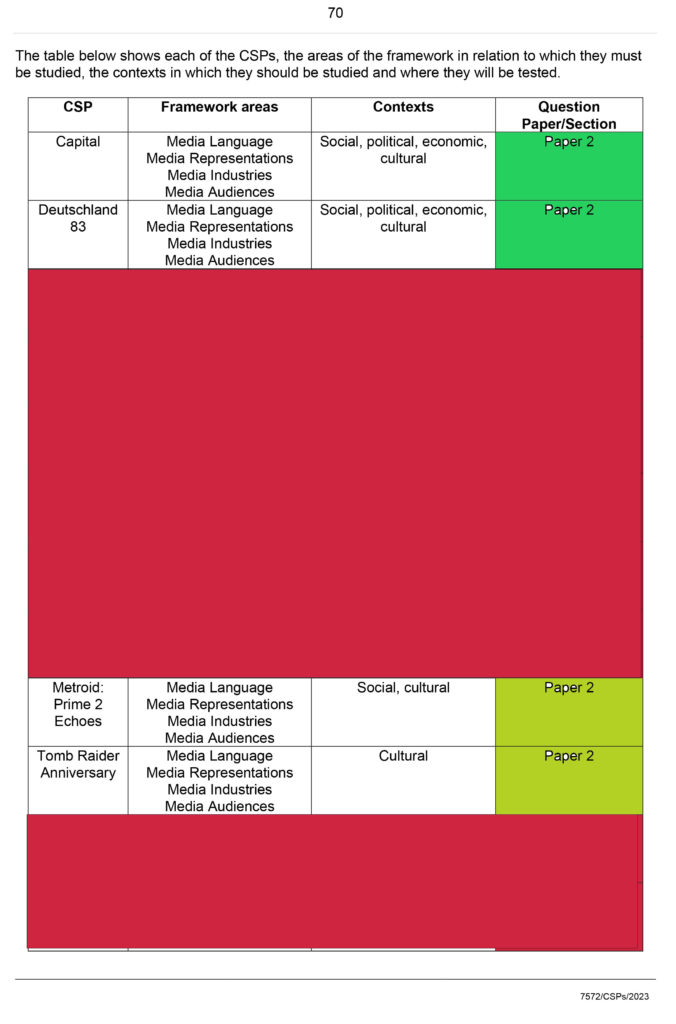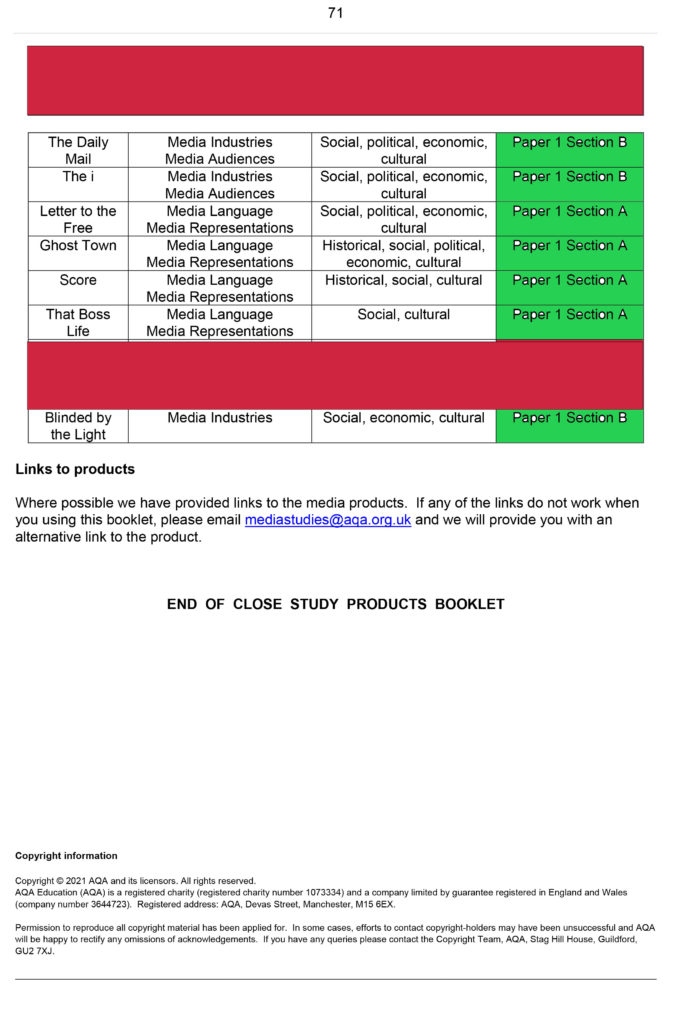POTENTIAL QUESTIONS
Media products are shaped by the economic and political contexts in which they are created.
To what extent does an analysis of your online, social and participatory Close Study Products (The Voice and Teen Vogue) support this view?
[25 marks]
Media effects theories argue that the media has the power to shape the audience’s thoughts and behaviour.
How valid do you find the claims made by effects theories? You should refer to two of the Close Study Products (Tomb Raider Anniversary, Metroid: Prime 2 Echoes, Sims Freeplay) in your answer.
[25 marks]
The target audiences for video games change because of the historical and economic contexts in which they are produced.
To what extent does an analysis of the Close Study Products Tomb Raider: Anniversary and The Sims FreePlay support this statement?
[25 marks]
Media producers must respond to changing social and cultural contexts to maintain audiences. To what extent does an analysis of the online close study products do the voice and teen vogue support this view [25 marks]
New Media
To start off with I would like to prioritise the notion of CHANGE & TRANSFORMATION as a way of thinking about NEW MEDIA which can be linked to the key ideas of a media syllabus. For example,
- the transformation of social interaction (audiences);
- the transformation of individual identity (audiences and representation);
- the transformation of institutional structures (industry); and the changes in textual content and structure (language).
- The transformation of audience consumption
In summary, this could be described as the changing nature of symbolic interaction and a lot of the work on this blog is essentially discussing this concept.
Dan Gillmor is a useful theorist to look at, you can read his book We Media by clicking on this link – provides an overview of how new media technologies have had an impact on relationship between citizens and government / institutional power.
New technology and media developments:
- Speed
- Knowledge
- Time
- Space/communication
- Understanding
- Access
- Participation
- Reality
- Privacy
- Choice
- Interactivity
- Storage
- Retrieval
Suggested Essay Structure?
Remember to focus on key issues around new media – privacy, knowledge, understanding, education, friendship, behaviour, thoughts, attitudes, beliefs, politics, economics, employment, war, conflict, food, the environment, space, science (essentially social change)
- Overview: New media always creates change (printing press, telegram etc)
- Q: so how has recent technology changed (society, individuals, organisations, ideas, beliefs etc etc)
- CSP 1 – show knowledge of CSP
- characteristics of new media (in reference to CSP 1)
- theoretical / conceptual analysis of new media (loop theory, network theory, Dunbar number, McLuhan, Krotoski)
- Critically thinking about new media (Baudrillard, McLuhan, Krotoski, B. F. Skinner, Zuboff, Lanier – are all essentially critical of new media technologies. But Gauntlett, Shirky, Jenkins are all very positive about new media technologies)
- CSP 2 – show knowledge
- Draw parallels and conclusions
- Suggest future pathways / developments




